In this series of articles we will cover diagnosis, service and repairs of Volvo Climate Control Systems that are commonly seen in independent shops.
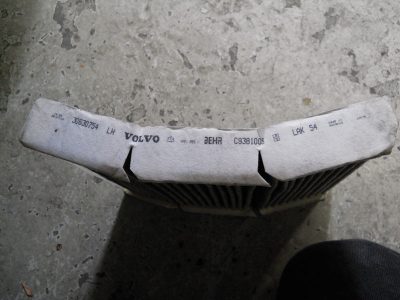
HVAC is not just another four letter word, even though working under the dash sometimes can bring out some of the most colorful words from the technician that is squeezed under it. Depending on what part of the world you’re from and what season it is, you may have a lot of customers wanting you to make their cars hot, cold or somewhere in between.
The Volvo climate control system is not just designed to keep the occupants comfortable; it has become part of the Volvo active safety system. Volvo engineers have done a lot of research and have proven that the correct temperature and air flow in the passenger compartment increases driver safety.
It is well documented that human performance abilities are reduced in heat. Research carried out in traffic and in a normal vehicle demonstrated that when the passenger compartment temperature was increased from 21 to 27 degrees C (69.8 to 80.6 degrees F):
- The risk of the driver missing important traffic information (hazard warnings, traffic signals, signs etc.) increased by 50 percent.
- The driver reaction times were 22 percent slower.
With an air conditioning system in the vehicle, car travel is both more comfortable and safer. A climate control system provides increased comfort by:
- Cooling the air in the event of high ambient temperatures or in warm, sunny conditions.
- Warming the air in the event of low temperatures.
- Dehumidifying the air.
- Filtering the air.
The relative humidity of the air is extremely important for our well-being and comfort. We perceive a relative humidity of 30-60 percent to be comfortable, as the moisture that is given off by the human body can easily be absorbed by the surrounding air.
If the humidity exceeds 75 percent, we perceive it to be oppressive and uncomfortable in warm weather, as the air cannot absorb much more moisture. For this reason, the climate control system is designed to regulate both temperature and air humidity.
Volvo climate control systems are very reliable. When these systems do have malfunctions, knowing how to proceed with testing can save you and your customers a lot of time and money.
Asking the Right Questions
The first step in any diagnostic procedure is to get as much information about the symptoms as possible from the customer. The service writer should ask questions like, how often the symptom occurred, what the ambient temperature was and what kind of noise, smell, or other symptoms the customer’s Volvo was displaying when the problem appeared.
Customer Education
In this day and age of smart phones, instant answers from Google, and the good old owner’s manual in the glove box, you would think that your average Volvo driver would know how to operate the climate control on his own car.
But this is not always the case, so when your customer brings their Volvo in for A/C or heating problems, it’s always good to take a test drive with the customer to try to confirm the symptoms. In many cases the customer just needs a lesson on how the system works, what’s normal and what buttons to push or not to push.
For example, most later Volvo climate control systems have a feature called afterblow. This program will run the blower fan long after the car has been turned off — a customer may think their Volvo has a mind of its own. A lot of customers come into shops thinking that their Volvo is possessed.
But if your customer has a 1999 – 2016 Volvo (varies by year and model), this condition may be normal. Afterblow is a feature in the CCM that commands the blower fan to come on at half speed, 50 minutes after the car has gone into sleep mode. This function is designed to prevent moisture from building up in the ventilation system that can cause mold growth and odors.
If you have VIDA and you have a Volvo that has not had the latest CCM software installed, you should advise your customer of the benefits of having the software updated; of course that goes for all needed software updates.
When working on any problem on a Volvo, it’s always helpful to check to see if there are any Technical Journals (TJs) for the system you’re working on. Volvo has several for their climate control systems. This information can be invaluable and in some cases the TJ is the fix for your customer’s problem.
Preventive Maintenance
Before we talk about some common Volvo HVAC problems, let’s go over some service opportunities that will help keep your customers’ Volvo HVAC systems performing the way they were designed to. Some of these services may even prevent some of the common HVAC problems that independent shops deal with every day.
Coolant
When your customer brings their Volvo in for regular service, it’s important to check their coolant not only for glycol level, but also for acidity. Many people think the only job of engine coolant is to cool the engine during the summer and prevent freeze-up during the winter, but that’s only part of the story.
The coolant also plays an important role in preventing corrosion caused by electrolysis. As the coolant ages, the additives start to deteriorate.
When this happens, the coolant can become a conductor of electricity, causing an electrochemical charge across the aluminum. This results in rapid corrosion and severe damage to the components in the cooling system including discoloration, pitting, flaking, and pinholes.
Since the coolant that’s inside the heater core is only being circulated when the heater is on, that worn out acidic coolant can make short work of the thin aluminum tubes inside the heater core.
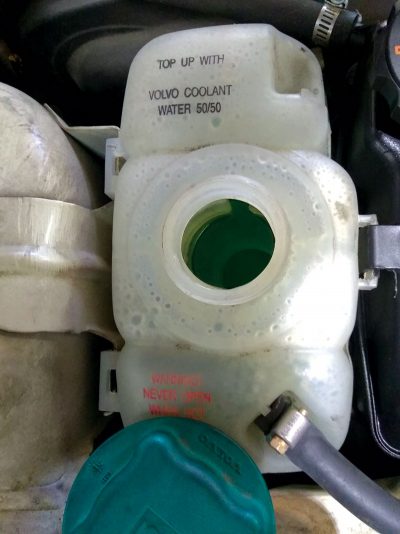
The easiest way to check the condition of your customer’s coolant is to use disposable coolant test strips. These can reliably test engine coolant for glycol level (freeze protection level) and pH level.
Volvo does not specify a recommended coolant pH level, but a pH level between 9.8 and 10.5 is about where you want it to be.
Water has a pH level of around 7-7.2, and most pure antifreeze has a pH level of 10.5. So this means that an exact 50/50 mix of antifreeze and water will have a pH level of about 8.75, which is a bit too acidic, so you should adjust your mixture accordingly.
A good rule of thumb is, if your customer’s coolant pH is below 9.0 you should recommend a coolant system flush and change.
Of course the best coolant to use on a Volvo is OE Volvo antifreeze/coolant. Volvo uses additives that are specifically designed to protect and not react with the alloys used in Volvo engines.
Cabin Filters
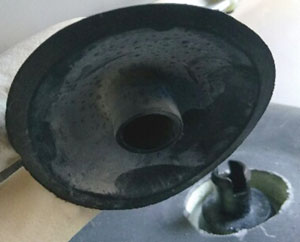
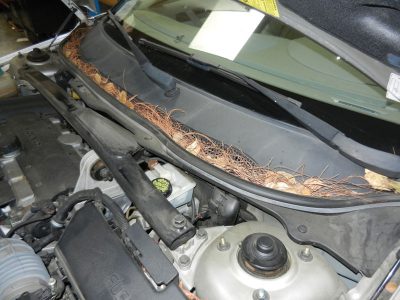
Volvo started offering cabin air filters as an option as early as 1994, and by 1998 climate system filters became standard equipment. On most of their models, Volvo recommends replacement of the cabin filter every 15K miles under normal driving conditions. A clogged cabin filter can cause the blower fan to overheat causing premature failure.
Also the organic debris (dirt) in the cabin filter can start to grow mold and mildew. This can be bad for customers with allergies and can help cause that foul smell that your customers are always complaining about.
Volvo HVAC systems work best when you install an OE Volvo replacement cabin filter. These high quality filters not only fit better, but they are designed specifically for Volvo climate control systems.
Evaporator Drains

Over time, the dust and debris in the HVAC system can build up in the bottom of the evaporator box and accumulate in the evaporator drain tube. It is important to make sure this drain is clear, especially in areas where there is high humidity or if your customers use the A/C for extended periods. Checking and clearing the evaporator drain should be a part of any A/C service.
The excess water in the A/C system will start to grow mold in the HVAC system that is very difficult to remove completely. To help prevent this from happening, you should educate the customer on the importance of keeping the HVAC intake vents clear of leaves and debris. A lot of shops will vacuum out the leaves when doing a regular service.
Clogged Interior Temperature Sensors
Volvo uses an interior temperature sensor in most of their climate control systems. Most of these sensors have a tiny fan that pulls cabin air through the sensor element. The CCM uses this data to help keep the cabin’s actual temperature close to the temperature selected by the driver.
Over time these sensors get clogged with dust and debris. When this happens, the cabin temperature data readings from the sensor can be off by a significant amount, causing the CCM to over- or under- compensate while trying to maintain the selected temperature.
These sensors are easy to check and clean. With a flashlight, look in the sensor inlet vent and, if there is dust buildup, gently blow it out with compressed air. If you have VIDA, you can check the cabin temp data before and after cleaning out the sensor. Sometimes there can be a substantial difference in the temperature readings.
Here are just a few common Volvo climate control issues
Here are some of the most common HVAC problems that are seen in independent shops on Volvos with higher mileage.
- Air conditioning shutting off on its own.
- Foul smell from the air ducts.
- Heater core leakage.
- Blower fan not working or only having one speed.
1993-2000 850/S/V 70 Worn A/C Compressor Clutch
When you get one of these early Volvos in your shop and the customer complaint is that the A/C stops cooling after being on for a while, especially on hotter days, you may be dealing with a weak compressor clutch.
As these cars age, heat, vibration and extended use can cause the A/C compressor clutch coil windings to start to crack and deteriorate.
As the worn compressor coil heats up, the cracks in the windings expand, causing the clutch to disengage due to a weak magnetic field.
Before you condemn the compressor, make sure you check the basics, like fuses, refrigerant charge level and, of course, power and ground at the compressor clutch.
And as with any Volvo A/C performance issues, you should start your testing by checking the temperature output at the center vents, with the A/C set at max, and compare this temperature to the ambient temp.
If the 134A is low on these early systems, the compressor will cycle on and off quickly as the low pressure sensor/switch turns power on and off. When the Volvo you are working on is displaying this fault symptom, the compressor clutch will have power, but will not engage.
You should always replace the compressor and clutch as a complete unit, along with a new receiver/dryer.
Most Volvo A/C compressors have well over 100K miles on them before they start to have any issues. So to make sure your customer gets the same performance and reliability out of their Volvo HVAC system, only use OE Volvo replacement parts.
Foul smells from vents
This is a very common customer complaint and a problem that is difficult to fix, at least fix permanently.
If moisture, mold, and bacteria are allowed to accumulate in the ducting and on the evaporator,
they can produce some very pungent smells.
As mentioned above this condition is preventable in most cases, but when a Volvo with this smelly problem is brought into your shop, it’s important to know how to proceed.
Some Volvo dealers use an ultrasonic cleaning system to deal with this issue as described in Retailer Technical Journal 19292. Volvo issued a service bulletin TJ 28340 that covers the change in the cleaning product that Volvo uses with their ultrasonic cleaning system.
Of course there are a lot of products on the market that claim to be able to effectively treat this problem. Most shops have used these products and have a favorite that gives them good results. But once the mold that causes these smells starts to grow, it’s very difficult to permanently get rid of it.
There are several ways to treat this, but the best solution is not to experience it in the first place.
Blower Motor not blowing or intermittently shutting off 1993-2000 850/ S70/V70/C70
After years of service it’s common to see the blower motors in these Volvos start to show their age.
The most common cause of failure is high resistance in the blower motor connector, causing excessive heat to melt the plastic around the connector and creating a poor electrical connection.
It’s easy to check for this problem; just remove the right side kick panel, turn on the fan switch and use a volt meter or test light to check for power and ground at the fan connector.
If you have both power and ground, try pushing on the connector. Many times the fan will start working. Make sure you always replace the fan motor resistor when you replace the blower fan motor.
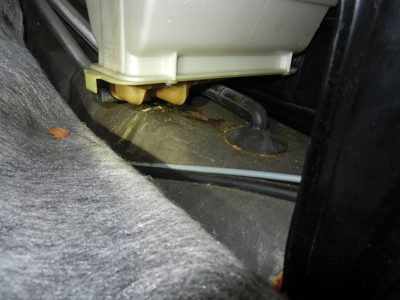
Heater Core Leakage
If you work on a lot of older Volvos, you will have to make checking the heater core for seepage or leaks part of your regular inspection procedure, especially on cars that have coolant loss problems. The most common heater core leaks are seen on
1993-2000 850/S-V 70 Volvos.
Most times the customer will not even notice that the core is leaking engine coolant inside the car, because in most cases when Volvo heater cores start to leak, the symptoms can be very subtle.
The first sign of this is usually mysterious engine coolant loss over long periods of time. The next most common customer complaint is a sour smell when the heater is on and poor defroster performance.
Some of these Volvos will have a slimy film on the inside of the windshield. If your customer has any of these symptoms, they probably need a heater core.
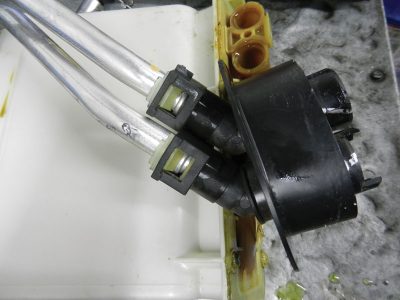
When you replace a Volvo heater core you should always use a high quality replacement core, like the OE Volvo unit you are replacing that probably has over 100K on it.
On 1993-2000 Volvo 850/70 series cars you should include the firewall coupler assembly, coolant and thermostat as part of a complete job.
Many shops have replaced heater cores on these early Volvos only to have the car come back with hot coolant gushing into the interior. The couplers get brittle over time and when the core is replaced, the pipes connected to the coupler get moved around. So do yourself and the customer a big favor and include this in every core replacement on these early Volvos.


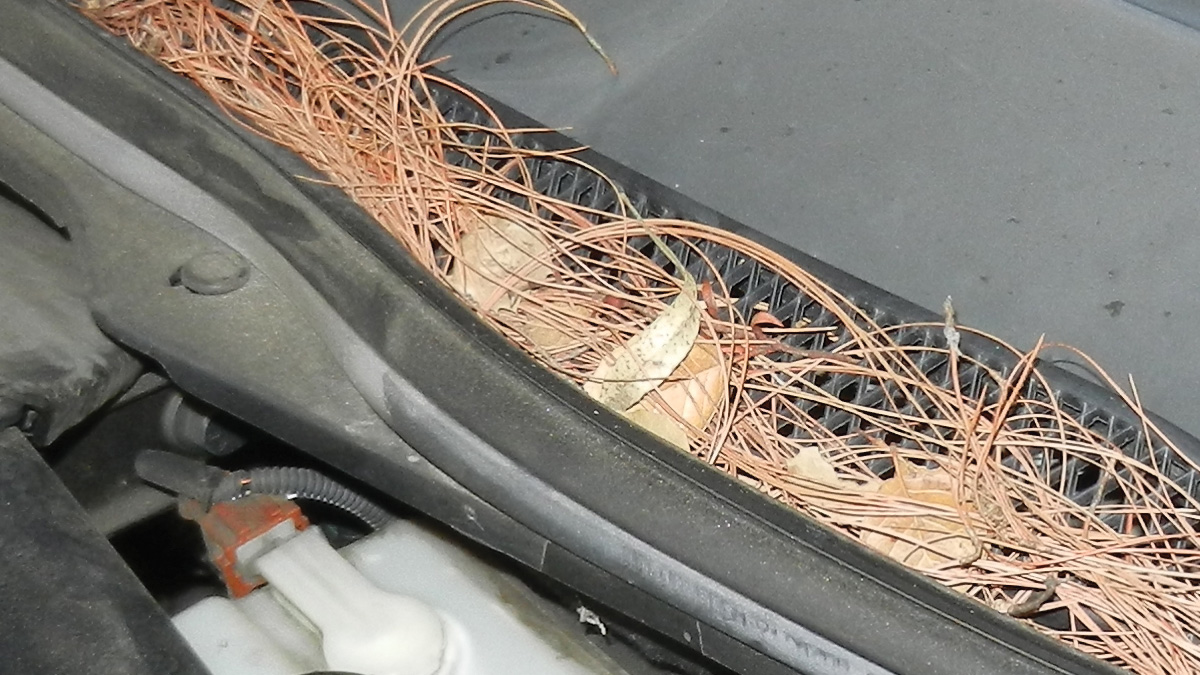





0 Comments